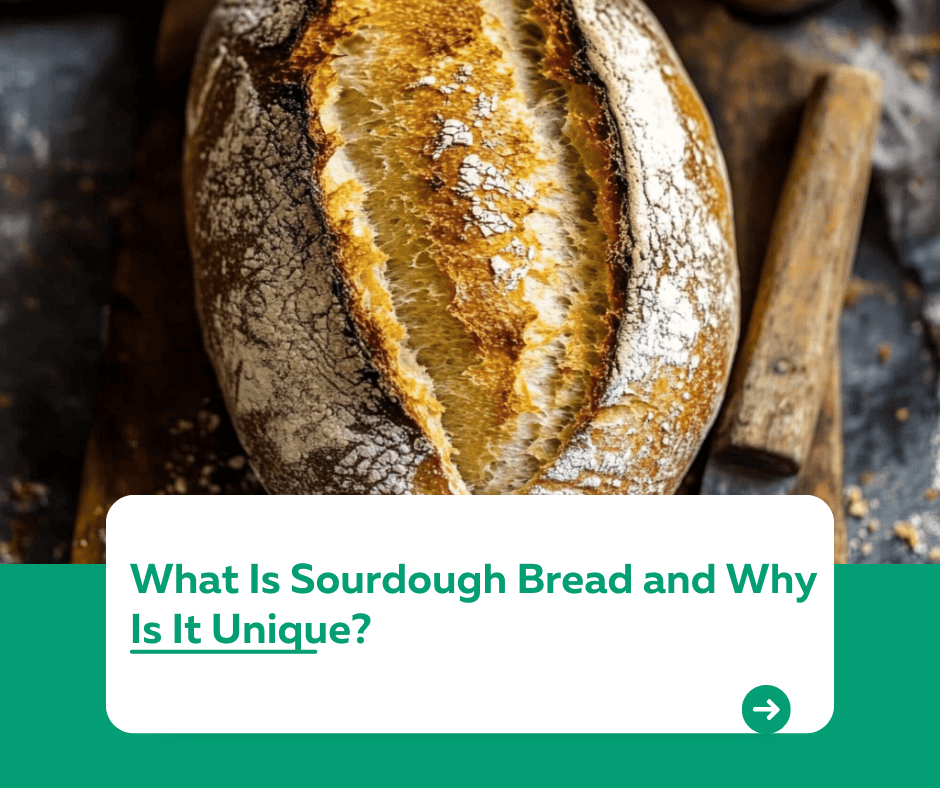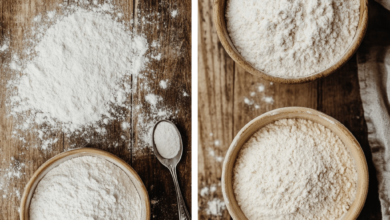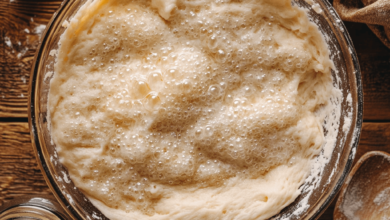What Is Sourdough Bread and Why Is It Unique?

Introduction
“What is sourdough bread, and why is it unique?”
Sourdough bread has gained popularity for its tangy flavor, rustic texture, and health benefits. Unlike regular bread made with commercial yeast, sourdough relies on natural fermentation using a live starter. This guide explores what makes sourdough special, how it’s made, and why it’s loved by bakers and bread enthusiasts worldwide.
1. What Is Sourdough Bread?
Sourdough bread is a type of bread made using a natural fermentation process.
- Key Ingredient: A sourdough starter, which is a mixture of flour and water teeming with wild yeast and lactic acid bacteria.
- Fermentation: The natural yeast and bacteria work together to leaven the bread, creating its signature tangy flavor and chewy texture.
2. How Is Sourdough Bread Made?
Making sourdough involves several steps:
- Creating the Starter: Combine flour and water and let it ferment over several days.
- Mixing the Dough: Add the starter to flour, water, and salt.
- Bulk Fermentation: Allow the dough to rise slowly, often over several hours.
- Shaping and Proofing: Shape the dough and let it proof for optimal texture.
- Baking: Bake the dough in a hot oven, often with steam, to achieve a crispy crust.
Tip: Sourdough’s long fermentation enhances flavor and improves digestibility.
3. Why Is Sourdough Bread Unique?
Sourdough bread stands out for several reasons:
- Natural Leavening: Uses wild yeast instead of commercial yeast.
- Distinct Flavor: The fermentation process creates a tangy, slightly sour taste.
- Nutritional Benefits:
- Easier to digest due to the breakdown of gluten during fermentation.
- Contains probiotics and prebiotics that support gut health.
- Extended Shelf Life: The acidity from fermentation helps preserve the bread naturally.
4. Sourdough vs. Regular Bread
| Feature | Sourdough Bread | Regular Bread |
|---|---|---|
| Leavening Agent | Wild yeast and bacteria | Commercial yeast |
| Fermentation Time | Long (12–24 hours) | Short (1–2 hours) |
| Flavor | Tangy and complex | Mild and neutral |
| Digestibility | Easier due to fermentation | May cause bloating in some |
| Preservation | Naturally preserved | Relies on additives |
5. Benefits of Making Sourdough at Home
- Customizable Flavor: Adjust the tanginess by changing fermentation times.
- Healthier Ingredients: Control what goes into your bread.
- Satisfying Process: Enjoy the art and science of bread-making.
Tip: Start with a simple sourdough recipe and experiment as you gain confidence.
Conclusion
Sourdough bread is more than just a loaf; it’s a celebration of natural fermentation and traditional baking techniques. Its unique flavor, health benefits, and artisanal qualities make it a favorite among bakers and food lovers alike. Whether you’re buying sourdough or baking it at home, this bread is a delicious and nutritious addition to any meal.
For more baking tips and recipes, visit our Kuestion.com.




